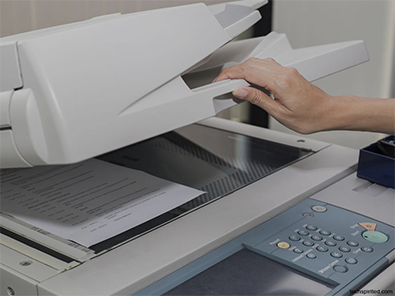This guest blog was contributed by Michael Rich.
With MPS gaining momentum and growing in popularity, there is no shortage of suppliers ready to jump on the bandwagon. Today, virtually every equipment manufacturer is selling some form of MPS. Likewise, most traditional office equipment dealers and resellers have adopted MPS programs – even retail stores and computer dealers. Meanwhile, channel providers that previously had little desire to sell printers or MFPs – IT VARs and managed service providers (MSPs) – are now getting into the game to expand their services portfolio and drive new revenue opportunities.
Implemented and managed effectively, MPS can certainly help businesses reduce costs and gain control of their document environments. Nevertheless, among all the success stories are many examples of MPS engagements that fail to meet customer expectations. Why? Poorly structured contracts, tying implementation to improper data metrics, lack of due diligence during the planning phase, and failure to properly consider strategic goals at the onset of the program are all common explanations. Often, the underlying problem can be traced to a simple disconnect between customer objectives and the capabilities of the MPS provider.
For these reasons, businesses must evaluate prospective MPS providers carefully to ensure program success and to be certain that the solutions selected can deliver the desired results. What factors should customers consider when evaluating prospective MPS providers? More importantly, what are the important attributes that separate best-in-class providers from the rest of the crowd?
A report soon to be released from Nuance titled “MPS Buyers Guide: Important Steps to Consider When Evaluating MPS Providers” reveals some interesting answers to those questions. The report looks closely at the needs of today’s MPS customer and provides a step-by-step approach to identifying the assets and capabilities of best-in-class MPS providers by considering factors such as:
- Assessments
- Process improvement
- Software and solutions
- Service delivery
- Security
- Mobility
- Environmental targets
- Service flexibility
- Change management
One interesting point revealed in the report is that businesses today have a better understanding of MPS than might have been the case just a couple of years ago. Today’s customers are better educated about MPS, and they are much more involved in defining program objectives and implementations. This holds true throughout the entire life cycle of the MPS contract, from assessment through implementation and renewal.
In the assessment phase, for example, many businesses need to evaluate the entire office document environment, not just the allocation of print resources. Assessments that go beyond device distribution, utilization rates and print volumes provide a better understanding of how devices are used and help uncover document-based processes that could be ideal for optimization. The simple assessment based on data collected from a digital network agent is no longer good enough in many instances, and MPS providers that rely solely on this type of solution risk losing out on many opportunities.
It is also interesting to note that MPS customers today place a much stronger emphasis on issues other than printing. Businesses are looking to expand their MPS implementation to drive further efficiencies into other document-related business processes: automating paper-based workflow, converting from paper to digital format and supporting mobile workflow. In other words, customer expectations are evolving, and MPS is now viewed as a vehicle for not only managing print, but also driving efficiencies throughout the entire document environment.
These trends underscore the importance that document software solutions play in today’s MPS engagement. Customers see greater opportunity for optimization and, as a result, have broadened their expectations in terms of return on the MPS investment. An effective managed print services solution should not only reduce printing costs, but should drive cost savings in other areas such as fewer break/fix interventions, reduced IT and help-desk calls, improvements in document workflow and business processes, and reduced environmental impact. The ability to provide core expertise in all of these areas is crucial to the success of any provider looking to establish a long-term position in the MPS space.
Michael Rich
Michael Rich was named senior vice president and general manager of Nuance Communications Document Imaging Division in April 2012. Prior to that, Rich served as senior vice president of worldwide sales for Document Imaging and Dragon. Previously, he was president and chief executive officer at Equitrac Inc.
Posted on 09/25/2013


